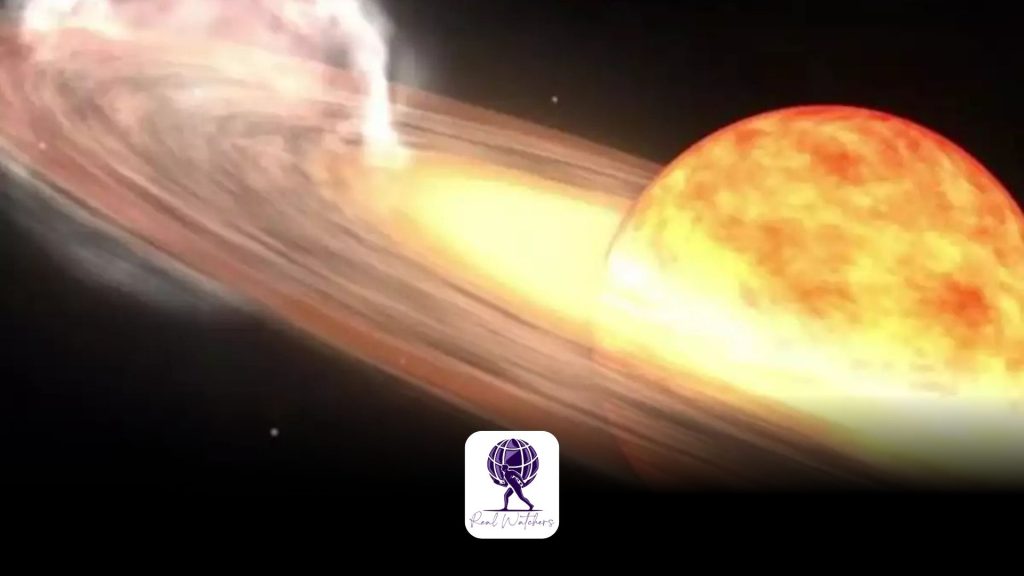On a frigid February evening in 1946, a 15-year-old student stumbled upon an unexpected revelation while gazing out of his bedroom window.
Michael Woodman, an enthusiastic amateur astronomer from Newport, was awake late into the night, anticipating his father’s return, when he observed an unusual phenomenon in the sky above.
“He explains that within the constellation of Corona Borealis, the second star in the ring of the Corona stood out as exceptionally bright.”
“I found myself thinking, ‘I’ve never encountered anything quite like that before.'”
The following morning, he composed a letter to the Astronomer Royal. The 94-year-old smiles as he recalls the memory, expressing surprise at his teenage self’s boldness.
“To my surprise, the Astronomer Royal responded with a letter I still possess.”
Michael Woodman observed a unique celestial phenomenon that momentarily illuminated the sky. The Astronomer Royal revealed that he was the first individual in the country to witness this phenomenon.
A star system located approximately 3,000 light years from Earth, known as T Corona Borealis, or T Cor Bor for brevity, has recently been observed undergoing a dramatic explosion of brightness, making it visible in the night sky for a limited time of just a few days.
“I hit the jackpot,” he remarked.
A new generation of stargazers is once again turning their gaze to the skies, as scientists suggest that T Cor Bor may ignite approximately every 80 years.
Under a pristine night sky in the Dark Skies Reserve of Bannau Brycheiniog, commonly called the Brecon Beacons, astronomers are preparing their telescopes for an evening of celestial observation.
“T Cor Bor is currently dim, with a magnitude of 10, which is significantly below the visibility threshold for the naked eye,” states Dr. Jenifer Millard from Fifth Star Labs.
To determine the area of the sky where it is expected to appear, she recommends identifying the Plough and tracing its handle to Arcturus. Located to the west of this star, the curved constellation of Corona Borealis comprises seven stars, and it is anticipated that T Cor Bor will illuminate at some point in the future.
“According to her, it will be visible to the naked eye for just a few days.”
“Having a small pair of binoculars or a compact telescope can enhance your viewing experience, allowing you to observe the subject for an extended period thanks to their magnification.” However, the brief experience in the sky truly enhances its uniqueness.
An astronomical phenomenon occurs due to the interaction between two stars in orbit around one another.
A diminutive white dwarf, the remnant of a deceased star, is engaged in a celestial ballet with a significantly larger red giant, a star approaching the twilight of its existence.
The compact white dwarf exerts a powerful gravitational force so strong that it siphons material from its larger companion.
“The surface gravity of a white dwarf is a staggering one million times that of Earth, meaning that standing on such a celestial body would result in immediate and catastrophic consequences,” states Dr Jane Clark of the Cardiff Astronomical Society.
As time progresses, the material siphoned from the companion star undergoes a process of crushing and compression. This culminates in a nuclear explosion, unleashing a significant burst of energy, a phenomenon called going nova.
“When that occurs, it will radiate like the finest Christmas tree in the area,” Dr. Clark states.
Astronomers believe this phenomenon recurs, with an outburst from T Cor Bor occurring approximately every 80 years.
However, documentation regarding this matter is scarce. There have been several instances where anticipation built around the potential appearance of T Cor Bor, only to be met with letdowns as the figure failed to materialize.
Dr. Chris North from Cardiff University has indicated that astronomers globally are ready to observe the upcoming light show, which will provide an unprecedented opportunity to analyze this star in greater detail than previously possible.
He expresses optimism that it may be revealed shortly.
“Historically, there have been instances where this phenomenon has shown a slight decrease in intensity before a significant eruption. There are indications that it may be experiencing a temporary dip in brightness,” he states.
“This could indicate that an eruption is imminent.”
Michael Woodman is eager for another encounter with T Cor Bor.
“I need someone to take me for a drive into the wilderness, where I can truly appreciate the scenery.” “That is what we are hoping for,” he stated.
If he catches another glimpse of the light show, he is convinced it will grant him entry into an exceptionally exclusive club—one that consists of just himself.
“Eighty years later, it seems the entire world is again gazing at the skies, not just me,” he remarks.
“Should I survive to witness it again, I will be the sole individual to have experienced it twice.”
With a wide grin and a light-hearted chuckle, he remarked, “Got to keep breathing!”








